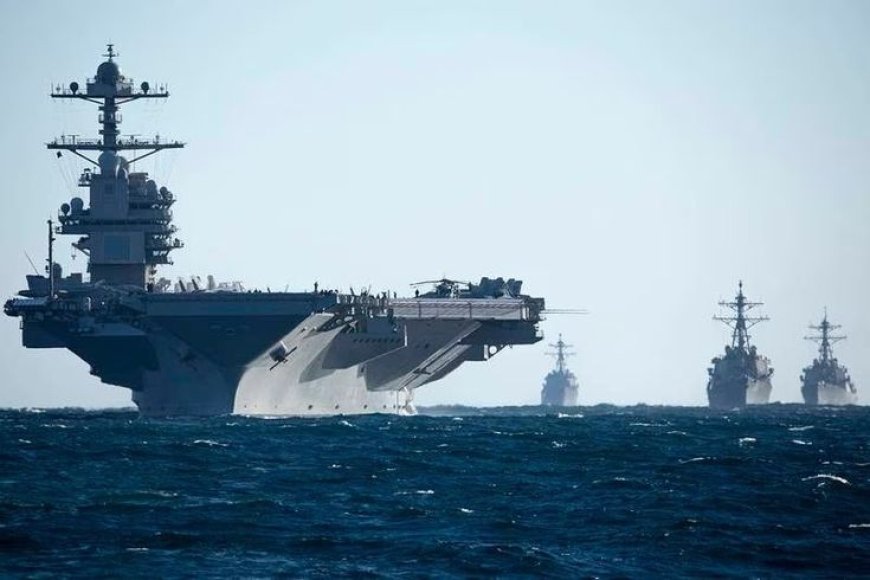10 Essential Navy Current Affairs for 2025 That Are Shaping Global Maritime Power
As the world’s oceans become the new battlegrounds for power, technology, and diplomacy, naval forces around the world are upgrading and evolving.

As the maritime world charges into 2025, the navy stands at the epicenter of global security and innovation. With rising geopolitical tensions, rapid technological breakthroughs, and a growing emphasis on sustainable and digital fleets, naval forces worldwide are being redefinedHeres a roundup of the 10 essential navy current affairs for 2025, highlighting key developments, strategies, and shifts that are impacting naval operations globally.
1. Integration of Artificial Intelligence in Naval Warfare
One of the most transformative developments is the integration of AI and machine learning in decision-making, navigation, and threat detection. Autonomous submarines, unmanned surface vessels (USVs), and predictive combat algorithms are revolutionizing how naval operations are conducted, reducing human risk while increasing precision and response time.
2. Indias Expanding Naval Footprint
India continues to strengthen its naval presence in the Indo-Pacific region. With the induction of INS Vikrant, the countrys first indigenous aircraft carrier, and a strong focus on regional partnerships such as the Quad (with the US, Japan, and Australia), India is solidifying its role as a maritime power. 2025 sees increased joint exercises and technological exchanges with allied navies.
3. Chinas Blue-Water Navy Strategy
China's ambition for a global navy is evident in its expanded shipbuilding program. The Peoples Liberation Army Navy (PLAN) has added Type 055 destroyers and more aircraft carriers to its fleet. Its base expansion in Djibouti and the South China Sea militarization continue to make headlines in global navy current affairs.
4. U.S. Navy Embraces Hybrid Propulsion and Green Fleets
Sustainability has docked at the naval port. The U.S. Navys Green Fleet initiative is investing in hybrid propulsion systems, biofuel-based vessels, and carbon neutrality by 2040. This push reflects a broader trend where navies are aligning with global climate goals while enhancing efficiency.
5. Rise of Maritime Cybersecurity and Digital Defense
With increased digitization of naval systems, cybersecurity has become mission-critical. 2025 reports show a steep rise in cyber intrusions targeting naval databases and infrastructure. Nations are developing specialized naval cyber units to prevent breaches, espionage, and potential manipulation of AI systems.
6. Submarine Modernization and Silent Warfare
From nuclear-powered submarines to stealth-capable diesel-electric subs, undersea warfare has entered a new era. Nations like Russia, the UK, and Australia are updating their underwater fleets with better sonar evasion, longer endurance, and greater strike capabilities. The AUKUS submarine deal remains a focal point in this domain.
7. Naval Drones and Unmanned Warfare
Unmanned naval platforms are now integral to modern defense strategies. 2025 sees the mass deployment of naval drones for surveillance, mine clearance, and even offensive strikes. The U.S. and Israel are among the leaders in autonomous maritime systems.
8. Arctic and Northern Sea Route Tensions
Climate change has unlocked new maritime corridors, especially in the Arctic. This has resulted in a race for influence over the Northern Sea Route, with Russia and NATO members boosting patrols and building Arctic-capable ships. Naval forces are now being trained and equipped for cold-weather operations.
9. Regional Conflicts and Naval Diplomacy
The Red Sea, South China Sea, and the Eastern Mediterranean remain flashpoints. Navy deployments are not only about deterrence but also diplomacy. Multinational naval exercises like RIMPAC 2025 and Malabar 2025 reflect growing collaboration and confidence-building among allied forces.
10. Womens Inclusion and Leadership in Naval Forces
2025 marks significant progress in gender inclusion. More female officers are assuming command roles, serving aboard submarines, and participating in combat operations. Initiatives from NATO and individual nations are pushing toward gender-balanced recruitment and leadership development.
Conclusion: The Future of Naval Dominance
The navy is no longer just about ships and submarines it's about data, strategy, technology, and sustainable innovation. As 2025 unfolds, these 10 current affairs showcase a dynamic shift toward smarter, greener, and more strategic naval operations.
Whether you're a defense analyst, policy strategist, or a maritime enthusiast, keeping tabs on these developments is crucial. The sea is changing and with it, so is the balance of global power.


































